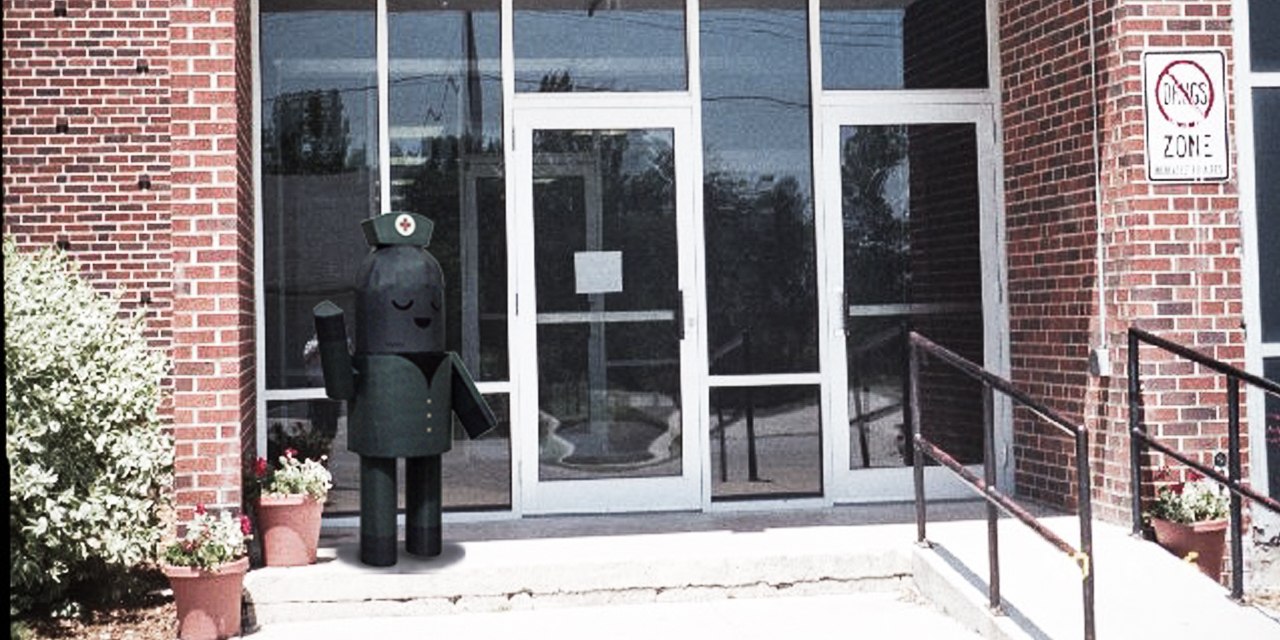Project U/ HIV-AIDS Awareness Campaign with LAUSD
- Global Health
- Public Policy
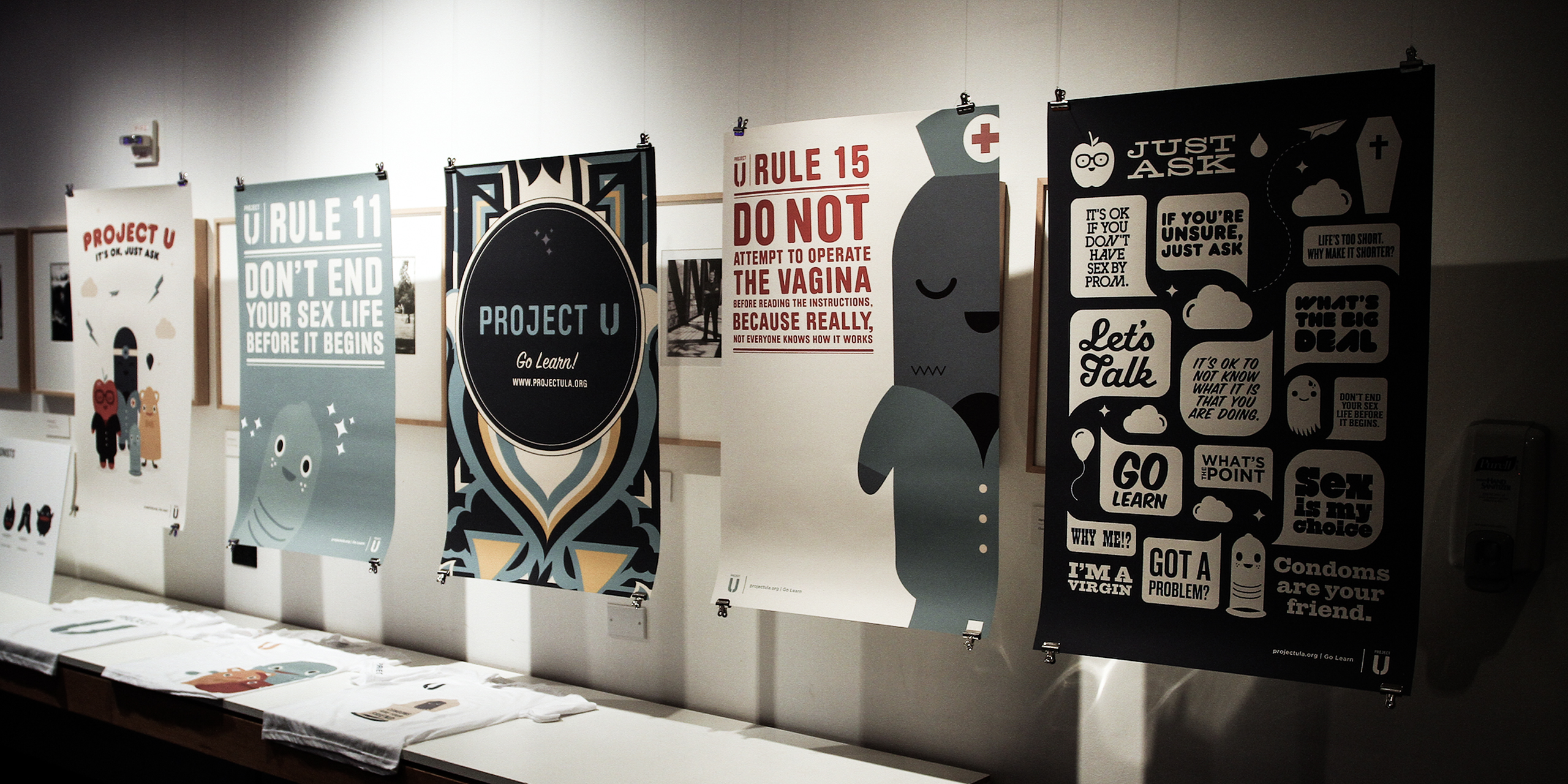
Summer 2011
In this Graphic Design class, students created a peer-to-peer awareness campaign to reinvigorate HIV/AIDS prevention efforts and condom use, targeting at risk African-American and Latino youth from the LGBTQ community. The project is a collaboration with the Los Angeles Unified District (LAUSD), Health Education Programs, HIV/AIDS Prevention Unit.
PROJECT UPDATE
After two years of refinement and pilot tests in 30 schools, LAUSD will roll out the program district-wide in fall 2014. Timothy Kordic, Project Advisor for LAUSD’s HIV/AIDS Prevention Unit, explained that his team wanted to bring the style and characters developed by Art Center students into an all inclusive interactive web platform. The website will include customized microsites for each school, chats, videos, blogs from students, and weekly polls. To keep students engaged, the website is gameified: students earn points for interacting with the site that they can trade in for t-shirts, stickers, buttons and stuffed animals featuring the Project U characters. To get schools and students involved, LAUSD has hosted 5 Project U Summits, with 3 more planned for the fall, to train student “Street Teams” and provide them with toolkits to bring the program to their schools. The Street Teams hand out materials and host events to encourage their fellow students to become involved in the Project U web community, thus making this a truly student-driven program. Visit the LAUSD HIV/AIDS Prevention website and the Project U website for more information on this great project.
I wanted our target audience to understand that they need to think about their own health, but I did not want for them to think we were preaching to them. I wanted them to get the message by acquiring more information at every turn, but with more fun and engagement. Art Center’s students really listened to what I was saying and to what the LAUSD students wanted–and then they made it work. It is more than I could have ever come up with.
—Tim Kordic, LAUSD – Health Education Programs, HIV/AIDS Prevention Unit, Project Advisor
Background
The Los Angeles Unified School District (LAUSD) is the largest public school district in California–second only to New York City in the US.
In 1985, the Los Angeles Board of Education approved the development of programs to prevent the spread of HIV/AIDS. Soon after, the U.S. Centers for Disease Control and Prevention began providing funds to develop age-appropriate lessons for students, and to train teachers in strategies for preventing the spread of HIV/AIDS and other diseases that may be transmitted sexually (STDs.) Additionally, funds are earmarked for the prevention of teenage pregnancy.
LAUSD prides itself on being an innovator in sexual education across the nation. With support from the CDC, the LAUSD HIV/AIDS Prevention Unit has been focused on targeting HIV/AIDS prevention among its at-risk demographic, leveraging peer-to-peer social networks.
The Prevention Unit also monitors health education programs and health behaviors that put youth at risk for HIV infection; there is an emphasis on high risk populations, like that of LGBTQ youth. Additionally, the unit maintains an HIV Program Review Panel. Comprised of teachers, students, parents and community partners, the panel meets to review supplemental materials for health classroom use.
The Prevention Unit approached Designmatters with partial grant funding from the CDC, which it was able to bring to the Project U challenge with a clear goal in mind: preventing the spread of HIV/AIDS through safe sex education and resources disseminated among high-risk youth populations, particularly African American and Latino LGBTQ communities between the ages of 14-22. The grant from was explicitly given to leverage peer-to-peer social networking media, which became a focus of the class’ work.
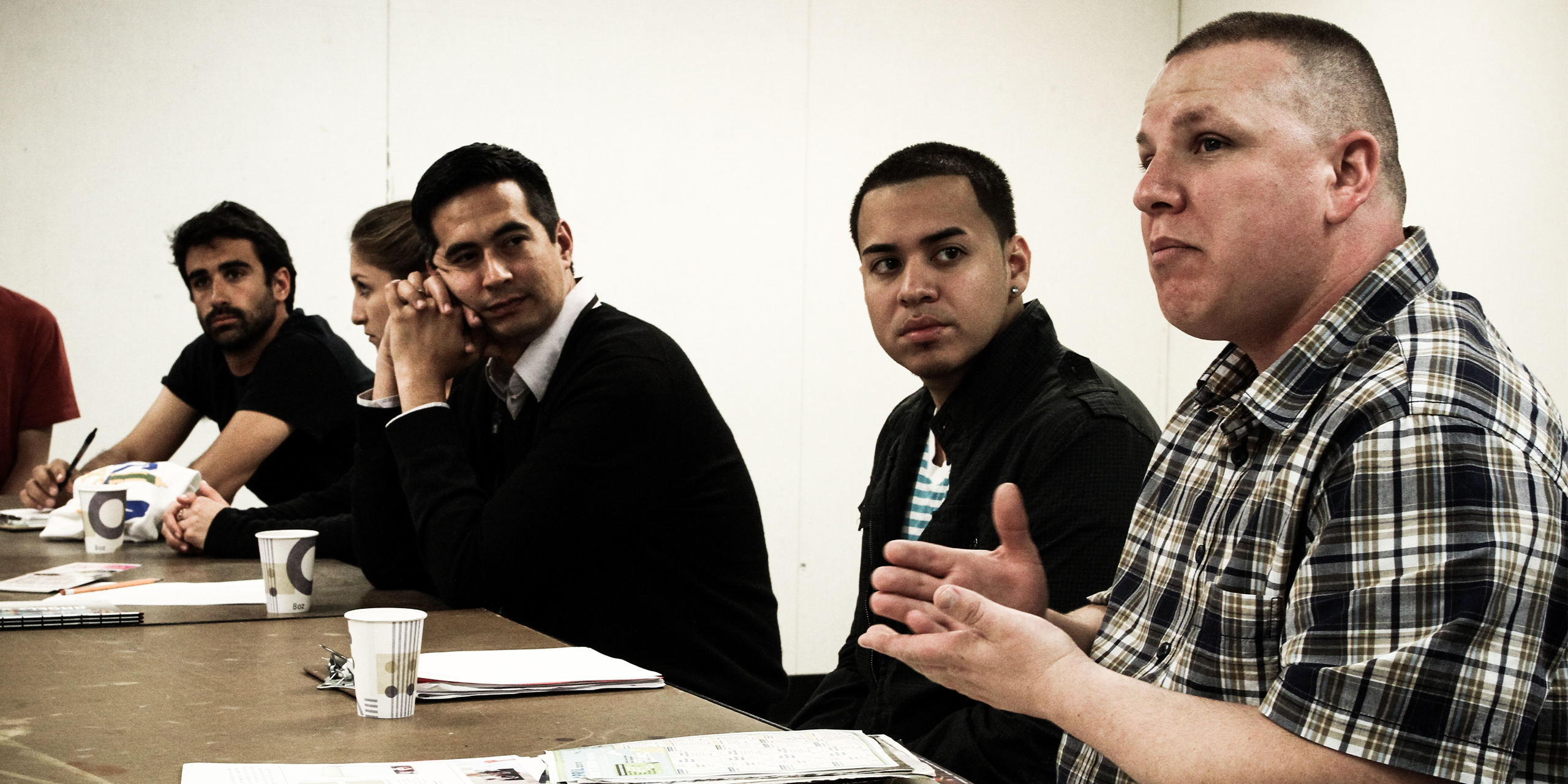
Design Brief
In this studio hosted by the Graphic Design Department, students were challenged to create a peer-to-peer awareness campaign to reinvigorate HIV/AIDS prevention efforts and condom use among LA high school students. The framework of a CDC grant supporting the LAUSD Prevention Unit set the target audience of the project: at risk youth (starting age 14) in the LGBTQ, African-American and Latino populations.
The campaign, called Project U, is based on bottom-up messaging and a mission for action-oriented awareness in teen sexual health practices. Believing it is imperative for young people to be armed with knowledge and resources to protect their long-term health, the design team set about creating innovative messaging for a high-school demographic, to drive behavior change and healthy sexual habits to last a lifetime.
Research and Development
The research phase for Project U occurred over six weeks, beginning with a UCLA-led Teen Leadership Summit in late May, which focused on peer-to-peer sex education messaging for high-school youth and was essential to the students’ understanding of their target audience.
Later, a panel of prominent experts in teen HIV and STD prevention visited the class with a collective body of expertise representing: LAUSD’s HIV/AIDS Prevention Unit, theRisk Reduction Program at LA Children’s Hospital, Sabores Youth Program, Bienestar,Lifeworks Mentoring, a division of the LA Gay and Lesbian Center, Gay-Straight Alliance Network, and UCLA’s Art and Global Health Center. Their varied perspectives created the opportunity for deeper understanding of key issues.
Research was absolutely critical to the final outcome. It manifested in a focused creative brief that was approved by the client before design was initiated. That, plus having direct contact and feedback with the client, having lectures provided by experts in their field, and attending the amazing teen summit with direct interaction with the teens, all played a vital role in the final success of the project.
—Tyrone James Drake, Faculty, Graphic Design
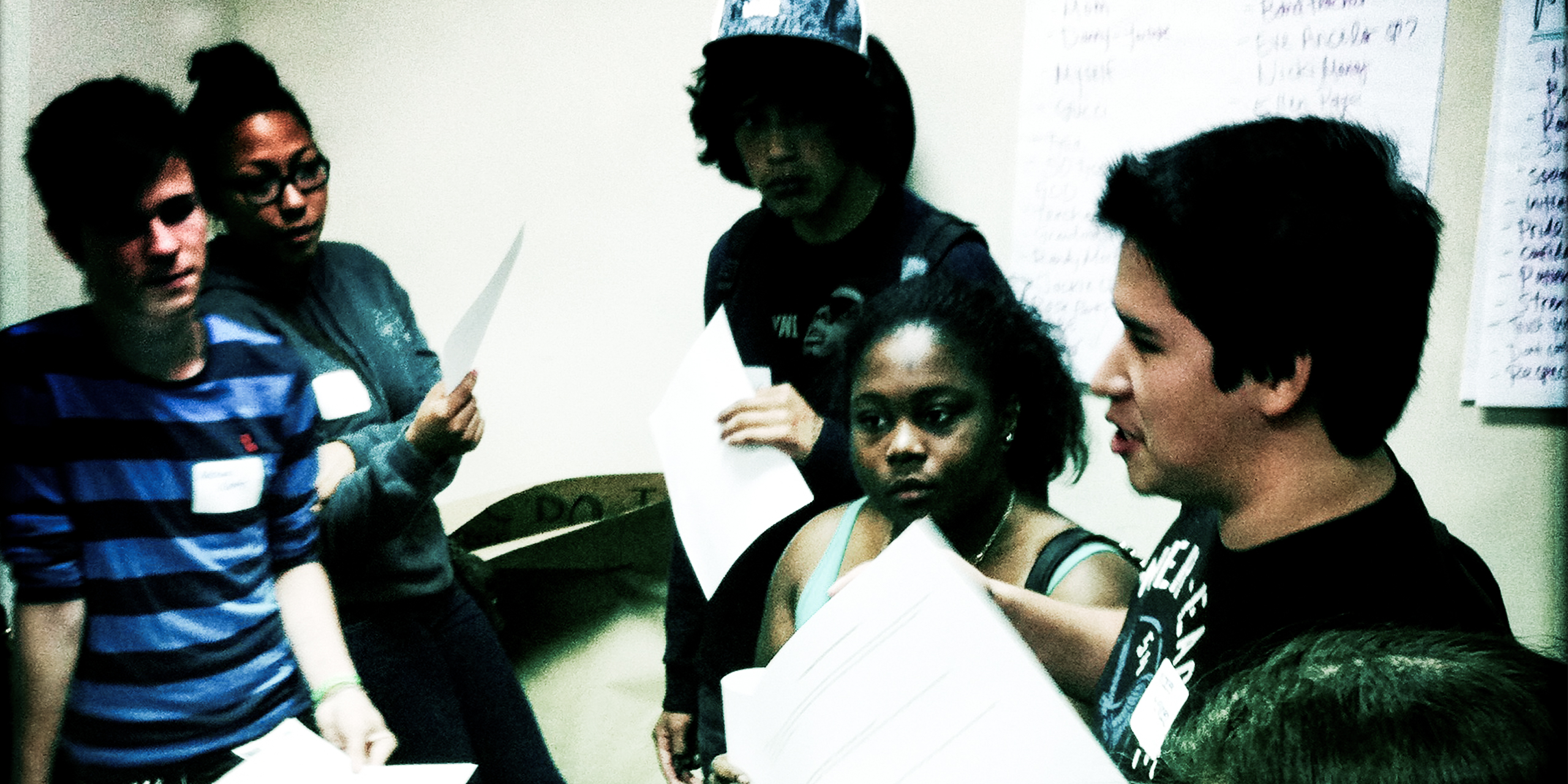
The creative brief that was developed early on brought the campaign’s goals into clear focus: create a culture for the “Project U” sexual education brand, generate a strategy for awareness of Project U, and—importantly—drive teen ownership in the campaign in order to keep youth involved in safe sex practices throughout high school and into the future. Capturing the voice of teens in an honest, authentic, credible and cliché free way was central to these goals; the tone of the campaign had to be dynamic and innovative, and yet support the key objective to impart palatable sexual health education to teens.
The campaign’s central concept is built around messaging of “Sex 101″ with its central theme of “The Rules: A Beginners Guide to Sex.” The goal of the “rules” was to be real and trustworthy; actual statements by youth from the Teen Summit were incorporated into them. The tagline, Go Learn, was used throughout the campaign materials to urge the target demographic to find out information before engaging in sexual practice, and to be educated about actions that will affect their long term health.
Design development focused on a character-based campaign. Several animated characters provided the main voice of the campaign, and were designed to be both visually appealing and gender-neutral.
Outcomes
Projects
The class split up into three design teams with three areas of focus that ultimately form an integrated campaign with print-based applications, screen-based applications, and environmental/ambient applications.
PRINT-BASED APPLICATIONS:
Often the first opportunity to introduce the brand, this team’s print based efforts were focused on posters, print ads, and zines with the goal of spreading the name and logo of Project U.
Posters were designed for various contexts, from billboards, to bus stop ads, to temporary wall “graffiti” using wheatpasting techniques. In order to make the campaign flexible and achieve greater longevity, some posters contained the “rules,” while others focused on introducing the characters.
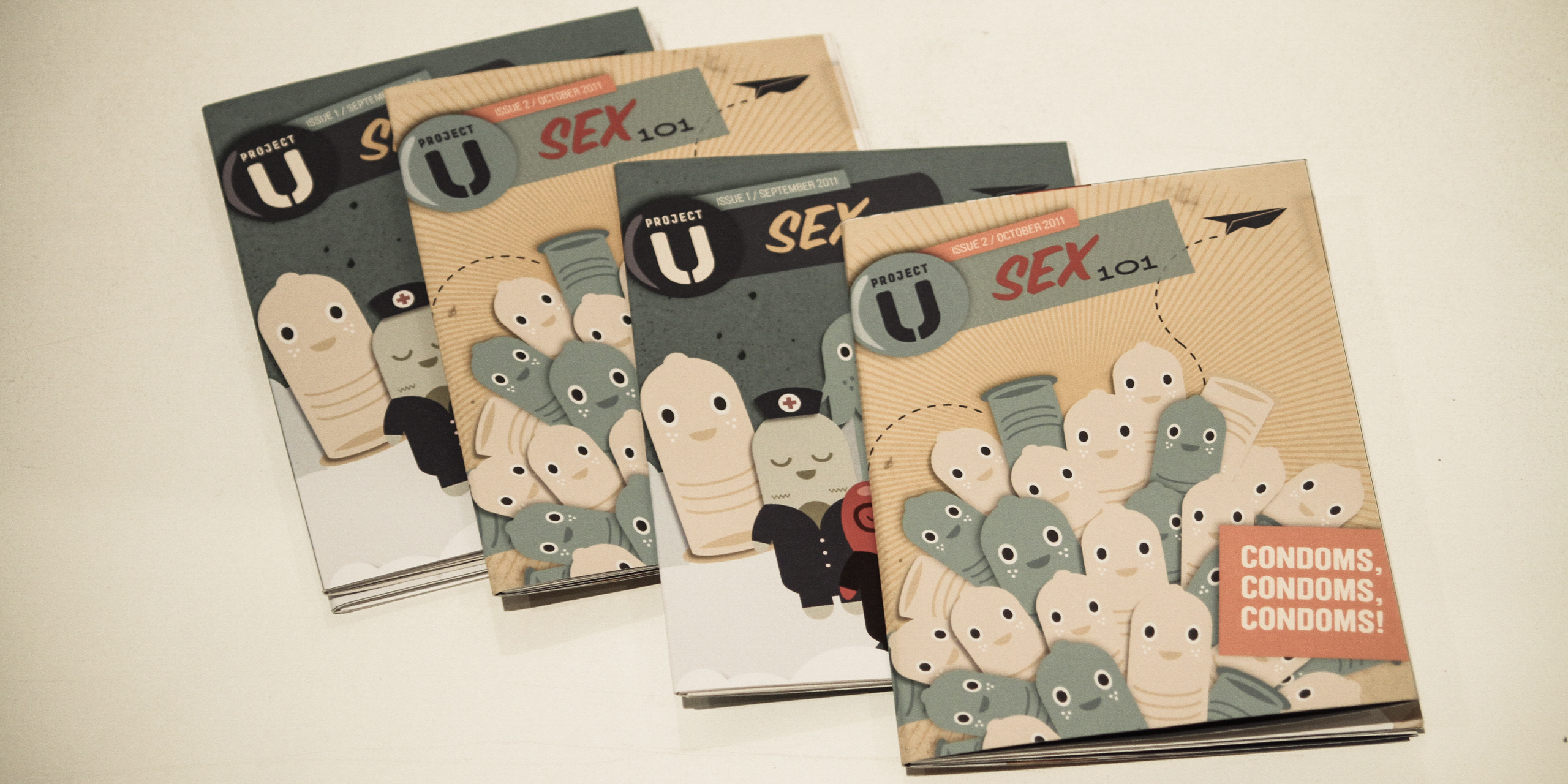
It was good way to get a real feel of how it is to work as a team and it helped me not just seeing the graphics design perspective, but the advertising and product perspective, too. Additionally, the scale of this project was rewarding; it was going out in the real world, it was going out into the community and it was going to impact the community.
—Ted Sin, Graphic Design Student
Zines were conceived to be almost pocket sized, something for teens to grab and keep. Always different and not too serious, each zine would be focused around a theme. Every issue introduces five new “rules” intended to drive teens to the Project U website to learn more; a center spread will carry an informative and thought-provoking article. Additionally, each zine is anticipated to contain a fold-out poster, sized to fit into school lockers; the last spread of the zine featuring games and the Project U street team’s schedule of school visits.
SCREEN-BASED APPLICATIONS:
This team was charged with creating a website that could feature a significant body of text on sexual health, within a dynamic design that would maximize approachability and return visits. The team also created an interactive email newsletter on the website that would link to current information and recent updates about Project U, and be an especially timely resource for website users.
In addition, smart phone applications for the Project U brand were developed by this team. For both applications, creating an ongoing relationship with the teens was vital, so the design team afforded users the ability to personalize the Project U characters as personal avatars and to create a pages and networks on Facebook and other social media sites.
The smart phone app was designed to be an all-in-one resource; it is comprised of four parts:
1. Condom finder. (with GPS access).
2. Clinic finder (with GPS access).
3. Picture uploader.
4. Character builder.
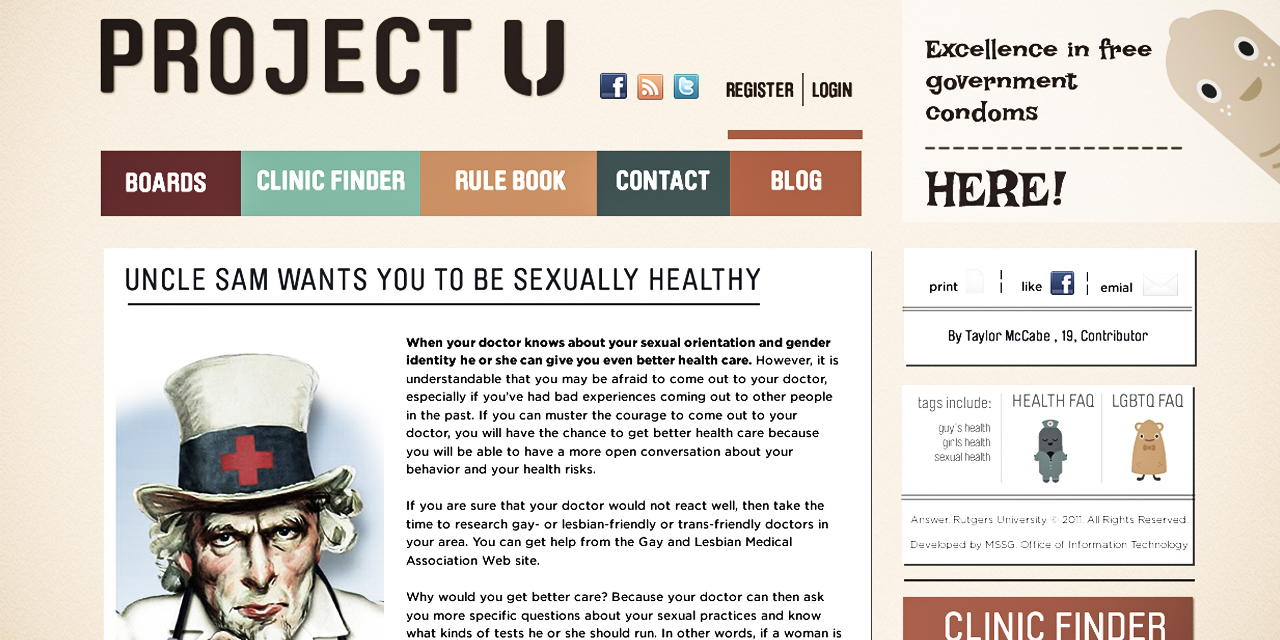
AMBIENT/APPLICATIONS
AMBIENT/APPLICATIONS
For this aspect of the Project U brand, the team’s challenge was to develop compelling and fun ways to extend the messaging through grassroots marketing and the outdoor environment.
From stickers in different shapes and sizes, to buttons and pins that are informative and edgy, the empowerment extensions provide “take aways” for the students to use. Additional designs by the team centered around condom packaging; one contained a return registration card for the Project U newsletter, another, a condom keychain that would hang on a backpack, and would reveal whether the owner did, or did not, have a condom; another doubled as a holder for student ID cards.
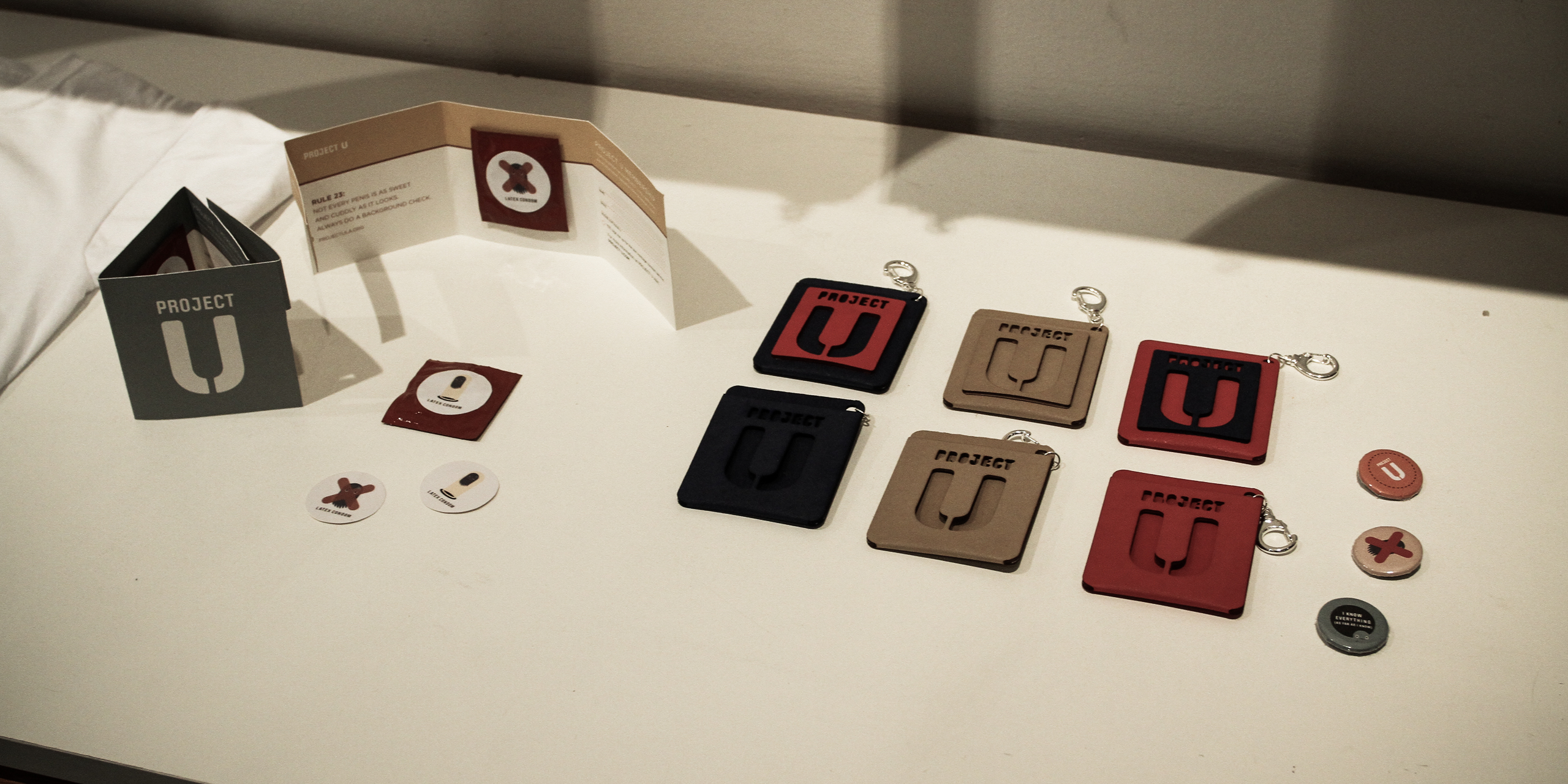
Research was essential because we were trying to speak to a demographic hard to reach. It was important for us to understand their lives; their senses of humor, what catches their attention and research helped us do that.
—Heather Grates, Graphic Design Student
In the context of the outdoor environment, the goal was to create a more casual, peer-to-peer connection, so designs were developed for large-scale wheat-paste posters and outdoor stencils. These brand extensions were envisioned as a way to bring the campaign out of the school and onto the street team vans.
T-shirts were also designed to reinforce brand recognition by featuring the logo, the characters, the “rules,” or various “updatable” promotions of Project U messaging.
Lastly, the environmental team envisioned a life-sized character that would interact directly with teens, and serve as a physical manifestation of the entire campaign. Made in 2D or 3D, the character would also serve a practical use as a condom dispenser.
